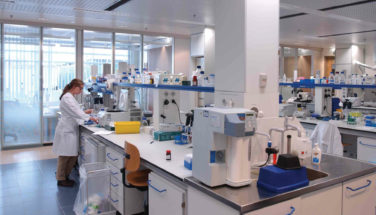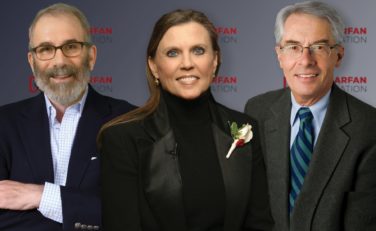With the media frequently drawing attention to the condition and with questions about its validity, rate of diagnosis and treatments, attention deficit hyperactivity disorder (ADHD) currently receives plenty of scrutiny. But the condition has been studied since the early 1900s, and written about years before.
Ritalin, perhaps the best-known ADHD treatment, has been available since CIBA introduced it in 1956. And while other therapeutic markets with long histories of research and established products are now dominated by generics, in the ADHD category, brands continue to compete and succeed.
MARKET GROWTH
The growth of the ADHD market has been tremendous. Ten years ago, in the 12 months that ended in August 2002, 22 million prescriptions for ADHD medications were filled. In the 12 months that ended in August 2011, the volume more than doubled, with over 51 million prescriptions filled. During the past 5 years, the market has grown about 45%.
MARKET SEASONALITY
Although public attention regarding ADHD typically focuses on children, both children and adults suffer from the condition. In the 12 months that ended in August 2011, 54% of prescriptions for ADHD treatments were for patients age 18 or younger. College-age patients (19-22 years) received an additional 7% of prescriptions.
ADHD patients were most often seen by pediatricians, who accounted for almost 57% of physician visits for the condition. Psychiatrists accounted for 29%; primary care physicians, 13%.
Interestingly, the fact that most patients are school-age results in a market seasonality that affects the volume of ADHD prescriptions filled during certain months. During the summer, the number of prescriptions filled drops, but the volume rebounds when school starts (Figure 1). Two trends, both related to the absence of school and its demands on children, are thought to cause the summertime drop in prescriptions filled.
First, parents choose to stop medicating their children when the need for focus is lessened. Reasons for this include parents’ desire to have their children medication-free, cost concerns, and the effort required to fill monthly prescriptions (more on this later). Second, when demands on children are higher, as they are during school, symptoms may be more noticeable, leading parents to take their children to a physician to be evaluated. During the summer, the percentage of ADHD drug prescriptions filled by new-to-market patients declines.

PRESCRIBING RESTRICTIONS
Since ADHD products are classified as Schedule II controlled substances, it takes more effort to obtain them each month than for noncontrolled drugs. Prescriptions cannot simply be refilled; each time patients need more of their ADHD medication, their practitioner must write a new prescription. In this market, it appears each month that virtually all prescriptions are “new” when really, on average, only 15% are actually being filled by patients new to a brand.

MARKET LEADERS
During the 12 months that ended in August 2011, 62% of prescriptions for ADHD treatments were for brands. Generic amphetamine salt combination, available since 2004, led the market with 20% of prescriptions. Following it were Shire’s Vyvanse (15% of market prescriptions), Johnson & Johnson’s Concerta (13%), generic amphetamine salt combination SR (10%), Shire’s Adderall XR (8%), Novartis’ Focalin XR (6%) and Eli Lilly’s Strattera (5%).
Ritalin’s generic equivalent—the drug associated with ADHD treatment by many—accounted for less than 5% of market prescriptions.
While Vyvanse led brands in prescriptions, it didn’t lead in retail sales (Figure 2). Concerta sales topped $1.3 billion during the 12 months that ended in August 2011. Vyvanse followed with $1.17 billion. Adderall XR, Strattera and Focalin XR trailed with $1.07 billion, $509 million and $487 million, respectively.
Each of the most popular brands offers physicians and patients benefits not found with the generically available older drugs, allowing them to compete effectively even with higher costs. A number of the newer therapies offer less frequent dosing, extended release and/or improved delivery systems. Strattera has the benefit of being a nonstimulant.
PROMOTIONAL EFFORTS
Shire, with Vyvanse and the Adderall franchise, has been heavily involved in this market for years and recently has invested more than others in promoting its products. Vyvanse, introduced in 2007, was supported by significantly more promotion than any other brand in the market (Figure 3).
In the 12 months that ended in May 2011, $121 million was spent marketing Vyvanse. The majority of that was allocated to detailing practitioners and promoting directly to consumers. Vyvanse sales representatives most often called on pediatricians (39% of details), primary care physicians (20%) and psychiatrists (20%). The most common messages delivered to practitioners were about Vyvanse’s duration of action and coupons or vouchers. More than $35 million was spent marketing Vyvanse directly to consumers with magazine and Internet advertisements.
Strattera was supported with $55 million in promotion. Concerta, Focalin XR and Adderall XR followed with $40 million, $23 million and $2 million in promotional expenditures, respectively. If the ADHD market continues to expand, as it has in the past decade, opportunities remain for brand growth. Unlike markets where generics have eroded brand share, in the ADHD category, brands that differentiate themselves with unique benefits likely can continue to compete with established, older generics.






